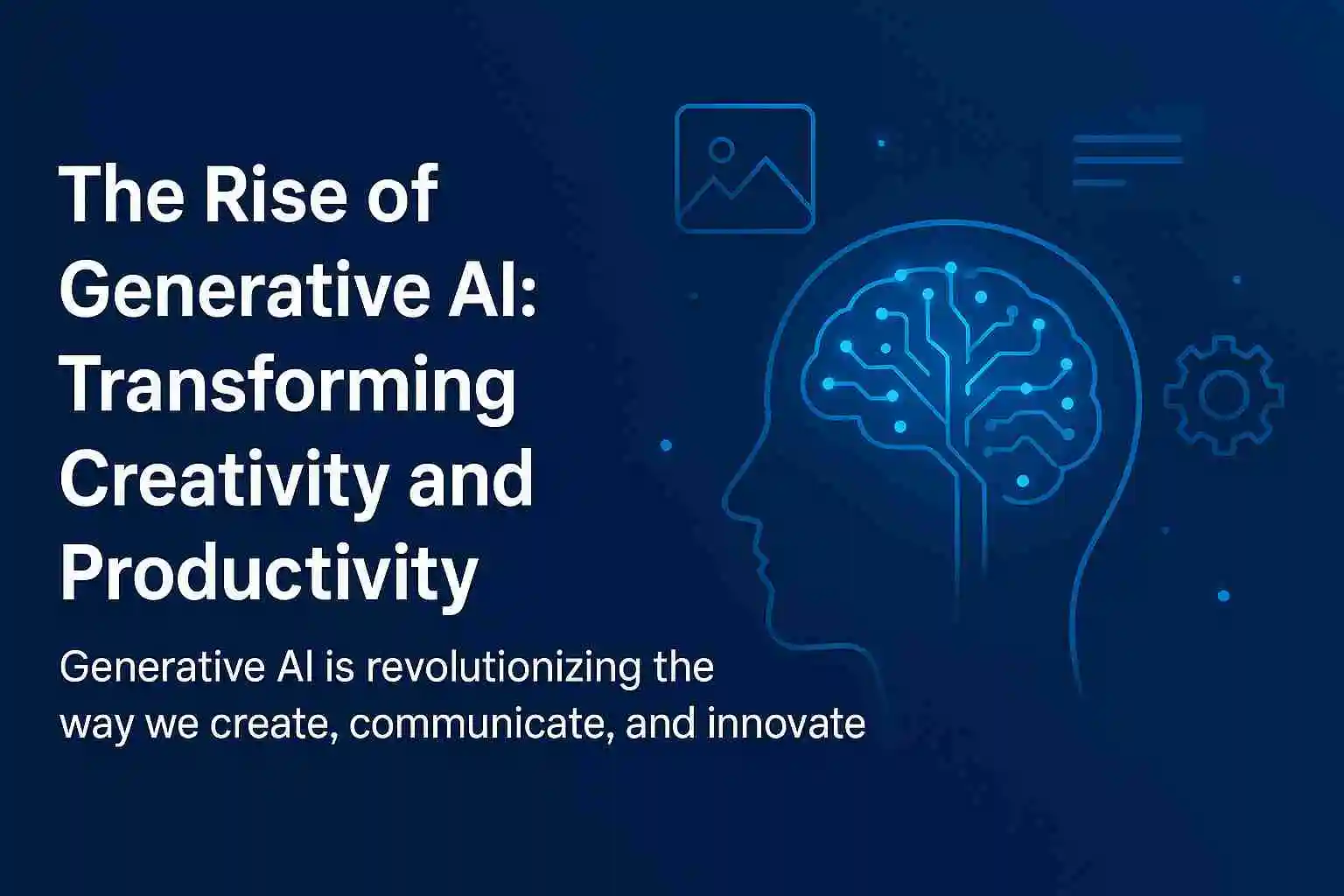Introduction
Artificial Intelligence (AI) is no longer a futuristic concept—it’s a part of our everyday lives. Among its many branches, Generative AI has emerged as one of the most disruptive innovations, redefining how we create, communicate, and solve problems. From generating art and music to writing code and analyzing data, Generative AI is pushing the boundaries of what machines can achieve.
What is Generative AI?
Generative AI refers to algorithms and models capable of creating new content—text, images, videos, audio, or even code—based on existing data. Unlike traditional AI systems that only analyze or predict outcomes, Generative AI learns patterns and produces original, human-like outputs. Popular examples include ChatGPT, DALL·E, MidJourney, and GitHub Copilot.
How Generative AI is Driving Creativity
Generative AI is empowering creators like never before. Artists and designers use AI tools to generate stunning visuals and prototypes in minutes. Writers leverage AI for brainstorming, drafting, and editing content. Musicians are experimenting with AI-generated compositions that blend genres in innovative ways. By accelerating the creative process, AI doesn’t replace originality but enhances it.
Impact on Businesses and Productivity
Across industries, Generative AI is transforming workflows:
- Marketing: AI generates personalized ad copy, product descriptions, and social media content.
- Software Development: Tools like Copilot help programmers write cleaner, faster code.
- Healthcare: AI models assist in medical research, drug discovery, and diagnostics.
- Education: Intelligent tutoring systems provide adaptive learning experiences.
These advancements save time, reduce costs, and improve efficiency—giving businesses a competitive edge.
The Ethical Challenges
While the opportunities are immense, Generative AI raises concerns around bias, data privacy, misinformation, and job displacement. AI-generated deepfakes and misleading content highlight the need for regulation and responsible use. Transparency in training data and human oversight are essential to building trust in AI systems.
The Future of Generative AI
The future of Generative AI isn’t about replacing humans—it’s about collaboration between humans and machines. As models evolve, we will see more personalized experiences, hyper-automation, and entirely new creative industries emerge. Organizations that embrace AI responsibly will lead the way in innovation, while individuals who adapt will find themselves empowered rather than replaced.
Conclusion
Generative AI is more than a technological trend—it’s a transformative force shaping creativity, business, and society. The key lies in balancing innovation with responsibility. By harnessing AI to enhance human potential, we can unlock smarter, faster, and more imaginative solutions to the challenges of tomorrow.

